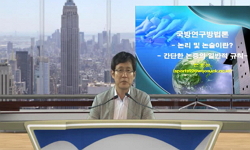본 연구는 2014년 현재 입산시간지정제를 시행하고 있는 7개 국립공원 탐방객에 대한 설문조사를 실시하여, 입산시간지정제의 정착에 미치는 요인을 파악하였다. 설문 응답자들의 입산시간...
http://chineseinput.net/에서 pinyin(병음)방식으로 중국어를 변환할 수 있습니다.
변환된 중국어를 복사하여 사용하시면 됩니다.
- 中文 을 입력하시려면 zhongwen을 입력하시고 space를누르시면됩니다.
- 北京 을 입력하시려면 beijing을 입력하시고 space를 누르시면 됩니다.
https://www.riss.kr/link?id=A101005099
- 저자
- 발행기관
- 학술지명
- 권호사항
-
발행연도
2015
-
작성언어
Korean
- 주제어
-
등재정보
KCI등재
-
자료형태
학술저널
- 발행기관 URL
-
수록면
636-644(9쪽)
- 제공처
-
0
상세조회 -
0
다운로드
부가정보
국문 초록 (Abstract)
본 연구는 2014년 현재 입산시간지정제를 시행하고 있는 7개 국립공원 탐방객에 대한 설문조사를 실시하여, 입산시간지정제의 정착에 미치는 요인을 파악하였다. 설문 응답자들의 입산시간지정제에 대한 인지율이 60.7%로, 제도에 대한 홍보는 성공적인 것으로 나타났다. 응답자들이 인식하는 재난 안전사고 원인에 대한 중요도에 대한 요인분석 결과, ‘탐방객의 부주의’, ‘공원 안전관리 부족’, '탐방객 산행 준비 부족‘으로 축약할 수 있었다. 요인분석을 통해 추출된 3개 잠재 요인과 응답자의 사회경제적 특성을 독립변수로 하고 입산시간지정제 취지에 동의하는 정도를 종속변수로 한 회귀분석 결과, 재난 안전사고의 원인이 탐방객 산행 중 부주의와 탐방객 산행 준비 부족이라고 생각하는 사람일수록 입산시간지정제 취지에 동의하는 것으로 나타났다. 이는 입산시간지정제 취지에 동의하지 않는 사람일수록 안전사고에 개인의 책임이 없다고 생각한다는 의미로, 재난 안전사고 예방을 위해서는 공원 내 안전시설 설치보다는 탐방객들에게 안전사고에 대한 경각심을 주는 홍보에 투자하는 것이 더 효과적임을 시사한다.
다국어 초록 (Multilingual Abstract)
In this paper, we examined factors that affect the success of a policy on trekking time restriction using questionnaire survey data collected from the visitors of seven national parks where the trekking time restriction policy is in force as of 2014. ...
In this paper, we examined factors that affect the success of a policy on trekking time restriction using questionnaire survey data collected from the visitors of seven national parks where the trekking time restriction policy is in force as of 2014. Results suggest that the trekking time restriction policy has been successfully publicized. In total, 60.7% of the survey respondents were aware of trekking time restrictions in the national parks they were visiting. Using exploratory factor analysis, we identified three latent factors (visitors’ careless trekking, park rangers’ insufficient management and visitors’ unpreparedness) that the visitors perceived the causes of trekking accidents in the national parks. Multiple regression analysis on the three extracted factors and respondents’ socioeconomic status shows that the respondents who read information signs in national parks and who judged visitors’ careless trekking and visitors’ unpreparedness as the causes of trekking accidents tended to agree more with restricting trekking time. These results indicate that visitors who do not agree with the trekking time restriction tend to attribute trekking accidents in national parks not to individual visitors, suggesting that educating visitors is more effective in preventing trekking accidents in national parks than installing and maintaining safety facilities by park rangers.
동일학술지(권/호) 다른 논문
-
- 한국환경생태학회
- 홍석환,권태호,최송현,김경태,김동필
- 2015
- KCI등재
-
야생동물의 존재에 대한 인지 및 야생동물의 종류(곰과 고라니)에 따른 국립공원 방문객의 휴양경험 비교
- 한국환경생태학회
- 김상미,최솔아,김상오
- 2015
- KCI등재
-
- 한국환경생태학회
- 남엽,유주한,허상현
- 2015
- KCI등재
-
- 한국환경생태학회
- 노유미,강희준,이상돈
- 2015
- KCI등재





 코리아스칼라
코리아스칼라


